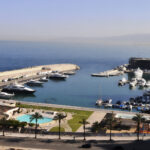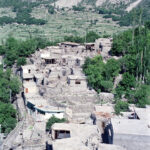Turpan, Dunhuang and Jiuguan
Turpan, Dunhuang and Jiuguan in 1987
Turpan, also spelled Turfan or Tulufan, is a city located in the Uygur Autonomous Region of Xinjiang in western China. It is situated in the Turpan Depression, which is the second lowest point (after the Dead Sea) on Earth’s surface. Turpan has a harsh, arid climate, with extremely hot summers (often reaching 40C in July) and cold winters.
The region around Turpan is known for its historical and cultural significance. It was an important stop along the ancient Silk Road, serving as a key hub for trade and cultural exchange between East and West. The city has a rich history, with archaeological sites, ancient ruins, and well-preserved artifacts attesting to its past.
One notable feature of Turpan is the system of karez wells, an ancient underground irrigation system that brings water from the nearby mountains to the agricultural fields. This system has been crucial for the cultivation of crops in the arid climate of the region.
Tourist attractions in and around Turpan include the Jiaohe Ruins (an ancient city ruins), the Emin Minaret, the Bezeklik Thousand Buddha Caves, and the Flaming Mountains. Additionally, Turpan is famous for its grapes, and the region produces raisins and wine.






Leave a comment